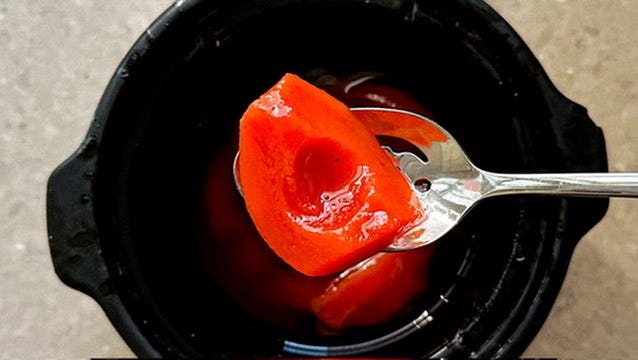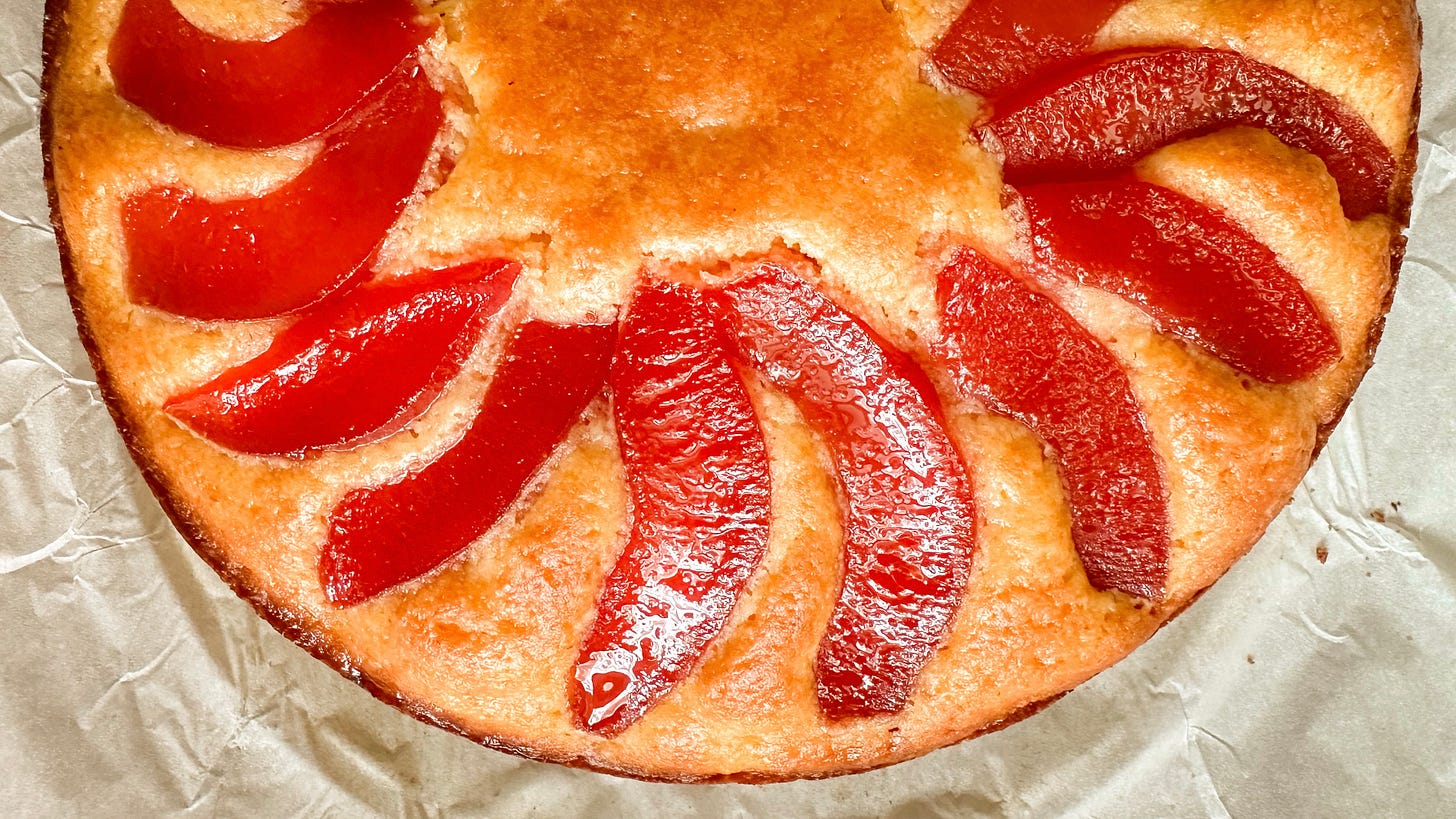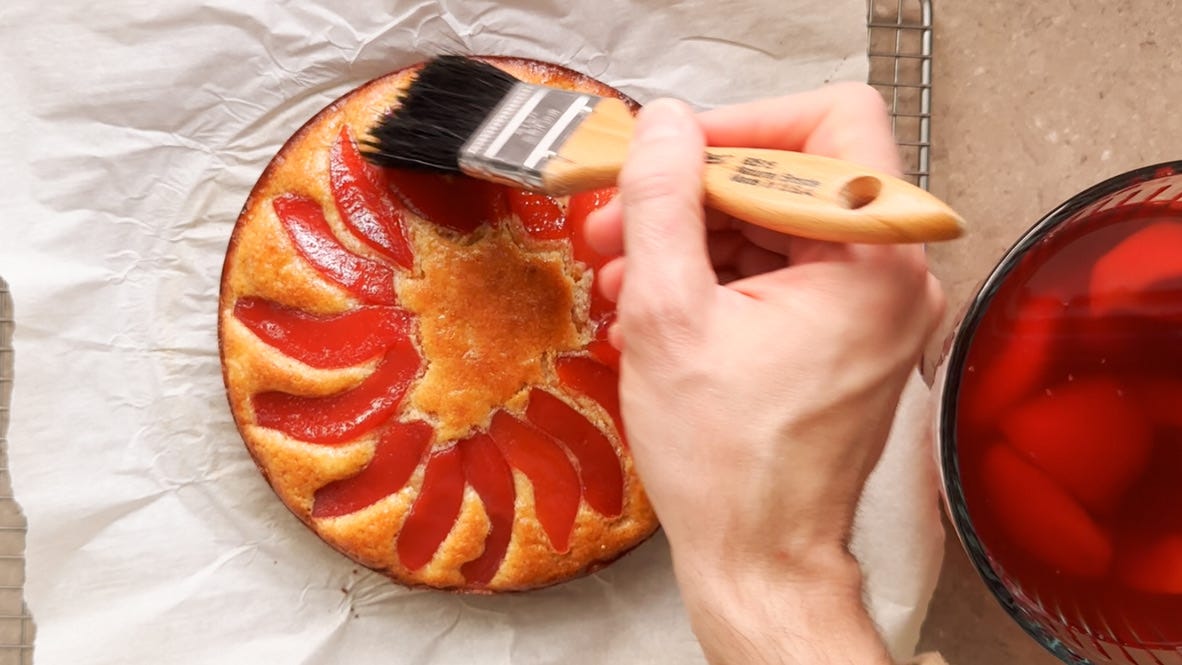A Cake You Won’t Make
But you should, because it's a simple yet luxurious Quince and Vanilla (or Tonka) Bean cake.
I can be a bit fancy, but subtly fancy. I enjoy quiet luxury, as the kids say. Emerald pistachios, golden European butter, or plump Tahitian vanilla beans get me going, as do quince, the perfumed queen of pomes. Want to know more about this gorgeous fruit? Read my treatise on it at Food & Wine.
Every fall, I stock up on quince and process it all into sliceable, sweet quince paste (membrillo or marmelada), quivering ruby quince jelly, and a bucket of rosy poached quince quarters. While I snack on the poached quince with some yogurt, I usually reserve it for baking. Last Thanksgiving, I got hooked on an new rendition apple pie studded with pieces of pink poached quince and the seeds from a fat vanilla pod. Very much humble pie meets Hermès.
I wanted to put the luxurious poached quince into a quick stir-together cake, and pair it with that heady, rich vanilla flavor. Look for a plump Tahitian vanilla bean (or Tahitian vanilla extract), which has a fruitier, more tropical tone than the Bourbon vanilla. But any vanilla bean works gorgeously.
If you live somewhere with legal access to tonka beans (like Europe, the UK, or Canada) I implore you to try that variation. I tasted them on my travels and still recall their haunting flavor. Tonka beans have notes of almond, vanilla, nutmeg, and a bright, light floral tone. They’re positively enchanting and would make a perfect match for aromatic quince. For more on tonka beans, check out Kitchen Projects’ lovely post on the ingredient. (Even though you’ll find it on menus, it’s still illegal in the United States.)
I say you won’t make this cake, but I hope you’ll take up the challenge. It’s not that hard. You just need to seek out the ingredients and then poach the quince.
I have a small Crock Pot that I use for two things: cooking dried beans and poaching quince. I follow Nicola Lamb’s recipe for poaching. Cooking quince breaks the rock-hard fruit down in a way that releases anthocyanins, a natural pigment that turns its white flesh a glorious ruby hue. Quince will deepen in color after cooling, so don’t fret if they’re only lightly pink right after poaching
Quince and Vanilla (or Tonka) Bean Cake
Splurging on a vanilla bean or freshly grated tonka bean gives this cake a wallop of flavor. Grated quince adds a subtle haunting aroma and keeps the cake unctuously moist. Grate the quince just before mixing it into the cake to avoid it browning.
Makes one 8-inch single-layer snacking cake.
120 g (1 cup) all-purpose flour
50 g (1/2 cup) almond flour
1 teaspoon baking powder
120 g (1/2 cup + 1 Tablespoon) sugar
1/4 teaspoon fine sea salt
The seeds of 1 vanilla vanilla bean (or 2 teaspoons vanilla paste) or 1/2 teaspoon finely grated tonka bean (or 2 teaspoons vanilla paste or extract)
2 large eggs, room temperature
80 g melted butter, cooled but still liquid, plus more for the pan
30 g olive oil
56 g plain Greek-style yogurt
100 g peeled and grated quince, raw (from 1 small quince or ½ a large quince)
150 g poached quince, sliced into 1/8-inch thick slices. (Poached Quince recipe here or here.)
About 2 Tablespoons of quince poaching syrup
Heat the oven to 350F with a rack in the middle of the oven. Butter an 8-inch round springform pan or cake pan and line the bottom with parchment paper.
In a medium mixing bowl, add all-purpose flour, almond flour, and baking powder, then whisk to combine. In a large mixing bowl, combine the sugar, salt, and vanilla bean seeds (or grated tonka bean), then add the eggs and whisk until it lightens in color, about 1 minute. Add the melted butter and olive oil and whisk to emulsify, about 30 seconds. Add half of the dry ingredients and whisk just until most of the flour is incorporated. Add the remaining flour and yogurt, then whisk just until there are no lumps of flour. Fold in the grated quince (not the sliced, poached ones!). Pour the batter into the prepared pan. Carefully arrange the poached quince slices on top of the cake in a circle or random pattern, your choice.
Bake the cake at 350F until the cake springs back when pressed in the center and a toothpick comes out with only a few crumbs attached, for about 28-34 minutes.
Let the cake cool in the pan for 10 minutes. Loosen the sides of the cake by running an offset spatula or butter knife around the outside of the cake, then remove the sides of the springform pan. Brush the top of the cake with a few tablespoons of the quince poaching syrup to give it a shine. Any more than a thin coating will make the cake soggy. Let the cake cool for 15 more minutes. Carefully remove the parchment paper and place the cake onto the serving platter and let cool completely.
Serve this cake plain, with whipped cream, or some quince-syrup-sweetened Greek yogurt.
This cake’s flavor improves for about a day after baking, and it lasts, covered at room temperature, for about 3 days.
Happy Baking,
Martin












I too have a predilection for quinces come Octobertime. Will poach some huge ones today I bought from a local market.